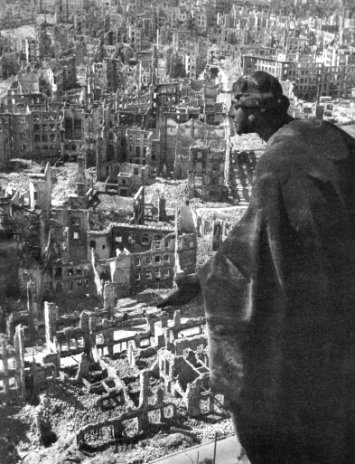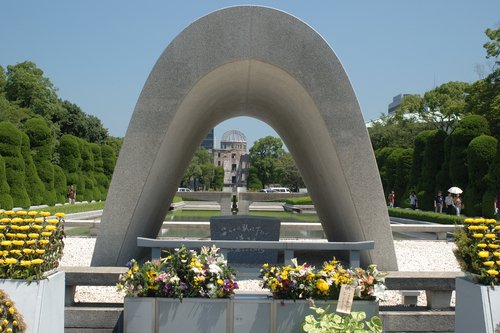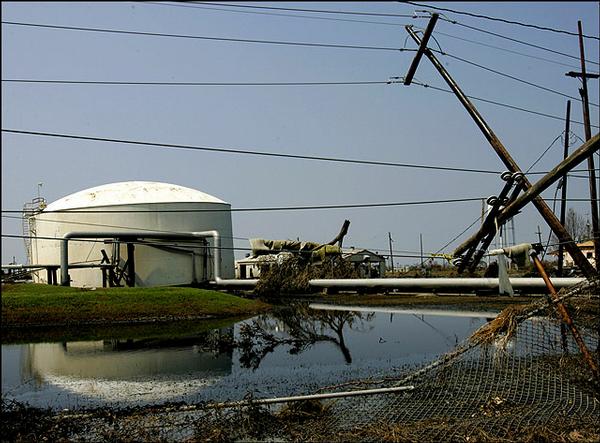In Dresden, Richard Peter published a photo book called Dresden - eine Kamera Klagt an (Dresden - a camera accuses). It is classified as one of Dresden's Dances of Death.

a photograph in Dresden - eine Kamera Klagt an by Richard Peter. image courtesy of www.praktica-collector.de.
Dresden's art, particularly of those who were alive during the city's bombing, has a stoic aura about it. War and the static economy remain in the minds of the artists.

artwork found on the wall of a club in Dresden, according to the band MK9. image courtesy of www.mk9.org.
Dresden was known for its porcelain China and its porcelain dolls. The craft carried past the war.

Dresden dolls. image courtesy treadywaygallery.com.
Much Dresden painting includes faceless figures interacting with light, darkness, and color rather than solid objects. Perhaps there is little faith in that which is physical.

Alles, was das Herz begehrt..." ("All that the heart desires...") by Eva-Maria Korsmeier. courtesy of dresden-art.de.

"Zwei Menschen im Licht und Shatten" ("Two persons in Light and Shadow") by Jutta Damme. courtesy of dresden-art.de.
In comparison to Dresden art, the art of Hiroshima also portrays figures in some sort of physically boundless environment, but in more detail outlines the gruesome physical details of the atomic effect on the human body.
 "Melting Hand" by Takakura Nobuko.
"Melting Hand" by Takakura Nobuko. "Charred Child" by Yamashita Masato.
"Charred Child" by Yamashita Masato. "Hiroshima Horse" by Shimada Tsuruhiko.
"Hiroshima Horse" by Shimada Tsuruhiko.  "The Last Drink" by Ono Kiaki.
"The Last Drink" by Ono Kiaki.the above four images are all courtesy of art-for-a-change.com.

"Monument to the Victims of Hiroshima" by Arto Tchakmaktchian. image courtesy www.naregatsi.org.
This artwork is highly descriptive, unlike the mostly ambiguous Dresden art. Hiroshima's disaster seemed to be focused on the ability of the nuclear bomb to do things to the human body that were never expected.
The art of San Francisco surrounding the earthquake of 1906 focuses on the large scale of the destruction rather than the human scale; the levelling (from shaking and burning) of an entire city.

"San Francisco Fire, 1906" by Walter A. Coulter. image courtesy the California Dept. of Conservation.

(Some of the) stills from a film (called "1906," by Jeremy Blake) exploring the famous Winchester Mansion as affected by the 1906 earthquake. Image courtesy fiegencontemporary.com.
As we study New Orleans' struggle to (re)establish its identity, my next post will explore the culture of destruction as it exists in New Orleans.
sources:
www.dresden-art.com
"Dis/Continuities in Dresden's Dances of Death" by Christiane Hertel. The Art Bulletin.
Art Academy, Dresden. www.art-academy-gmbh.com/
Art-For-A-Change: the Nagasaki nightmare.
Feigen Contemporary.


































